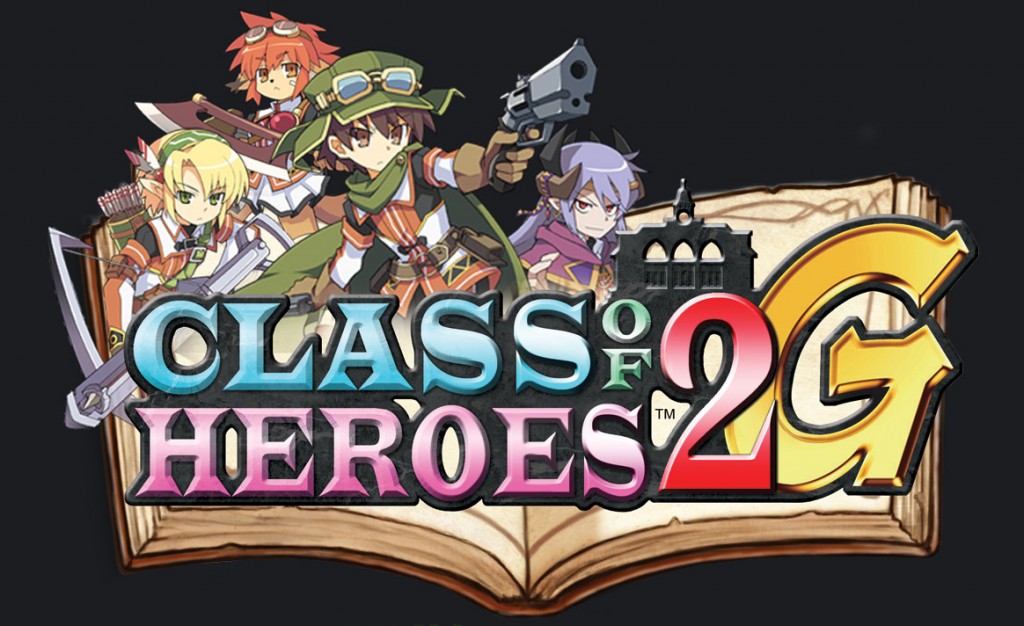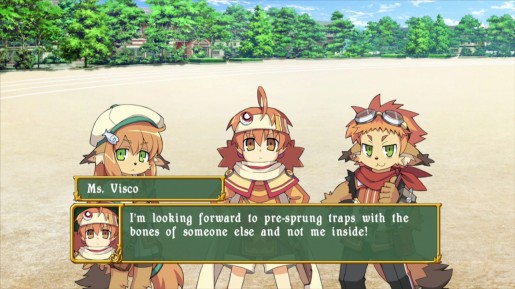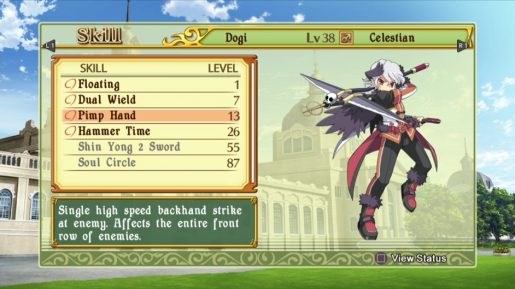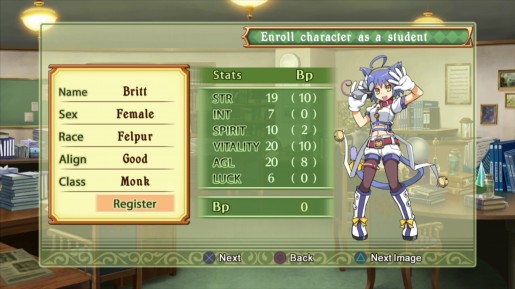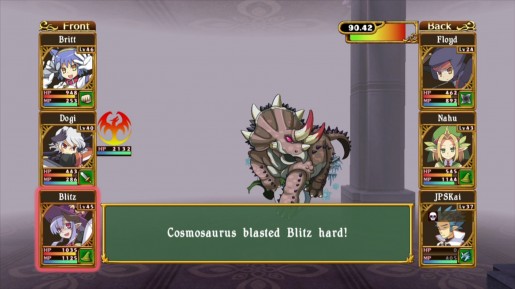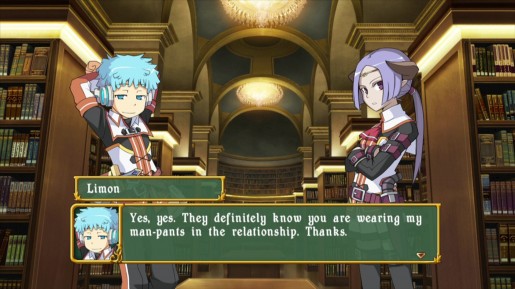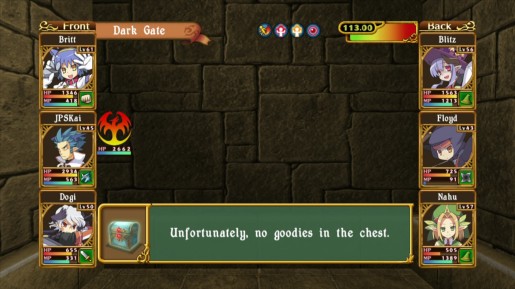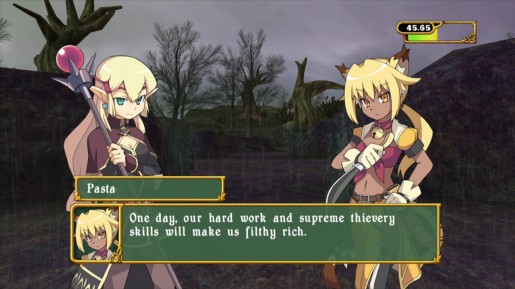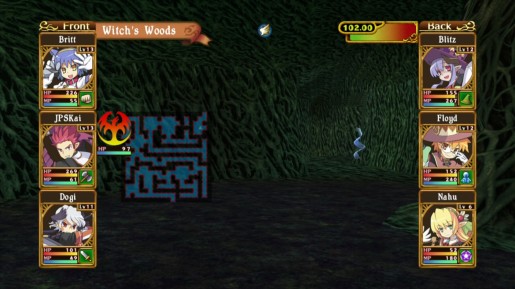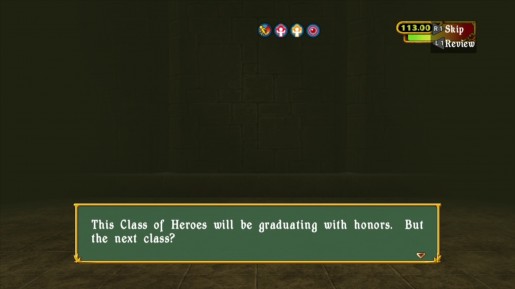Acquire (and Zero Div) seem to be becoming a more prominent game developer of recent years in the US. Some of their more recent titles such as Sorcery Saga and Mind-Zero have only just released in the States through various publishers. Their latest US release, Class of Heroes 2G, arrives by way of Working Designs-veteran Vic Ireland and his new company Gaijinworks. This new dungeon crawler takes the original Class of Heroes 2 and expands upon it with new content as well as a console release on the PlayStation 3. Is Class of Heroes 2G worth enrolling in, or is Crostini Academy in need of more than just a fresh coat of paint?
Class of Heroes 2G‘s story opens with a freshly enrolled band of adventurers in the Crostini Academy, a school rife with all of the common tropes you’d come to expect from a Japanese high school setting in this day and age. Bitter rivalries, student/teacher “romance”, plans and hijinx that quickly backfire in dramatic fashion, et cetera. The translation harks back to the days of Working Designs and the PlayStation 1-era of JRPGs, as seems to be Ireland’s signature style. Who knew that one of a samurai’s most effective moves in battle was a pimp slap? All of the dialogue, item descriptions, and flavor text seem to share a sort of whimsical and easy going attitude that fits in line with the school setting.
Parties in Class of Heroes 2G consist of six party members, split evenly between front and back rows. You’re free to use any of the ten races to compromise the core of your party although some races are better suited for roles than others. Six basic classes are available from the onset, but in total there are 19 jobs to work with. These advanced classes not only have particular requirements such as race, stats, or alignment but also may only be available at the other two schools in the game, requiring the player to advance far enough in the story to unlock these two.
An interesting thing to note is that character creation will assign that character a pool of bonus stat points, ranging anywhere from a measly couple upwards of thirty-plus. Rerolling takes no time at all and it’s quite easy to start out the game with a team of bruisers with maximum strength and vitality to make the early game more manageable. Class of Heroes 2G balances this out by giving characters with lower BP better stat boosts more often upon leveling up, and characters with much higher BP the opposite. This is probably one of the only games I’ve played where a character has actually LOST stats just for leveling up.
Changing classes is as simple as talking with the headmaster of each academy and selecting a new curriculum and offer benefits such as keeping ones stats and learned spells, although HP/MP and skills are reduced. This can be quite handy if you wish to have some back row members learn the various types of magics in the game or advance a character from being a ranger to perhaps a gunner or idol.
Buffing magics are required in Class of Heroes 2G perhaps more than other games in the genre. Trapped floors exist in nearly every dungeon, so having some method to float is a necessity. For floors that have both a pitfall and anti-magic field, having some means of manual flotation is needed. I found myself having to wear a pair of low-level shoes called Stilts for the entirety of the game those characters that didn’t have an inherent penchant for floating just to navigate through these areas and complete every map in the game.
Magic users by far seem to be the most effective members to have in a pinch, especially in higher levels. An Elf summoner could summon a Seraphim, acting as a seventh party member and far outranking those I frequently used. Combat frequently became trivial as this Seraphim could hit for two or three times what my strongest melee combatant could in addition to having nearly double their life points. These summons stay out for the entirety of an expedition, only expiring upon reaching a town or finally running out of health (a feat that’s harder than it seems outside of boss fights thanks to a passive HP regeneration). Without Seraphim or other magic spells in combat, I’d say that Class of Heroes 2G would have some of the harder combat in the genre, but with these powerful spells, sometimes that difficulty becomes nearly arbitrary. There exists a higher difficulty mode in the options mode for those that prefer an added challenge.
Items and equipment are an unusual case in Class of Heroes 2G. Many items that are party staples are seemingly in very short supply. For much of the early game, a wyvern call ticket that allows for travel to any previously-visited place on the world map cost a hefty 10,000G and are frequently limited to one per town, if they even stock it at all. It’s a similar case for some of the better equipment for your party members. For new and better equipment, there are typically three options to work with: post-battle spoils, chests in dungeons, and alchemy. The first two are completely random, as even the treasure chests you come across in dungeons can be of random rarity (walking away and approaching the chest once more can easily turn ones luck around).
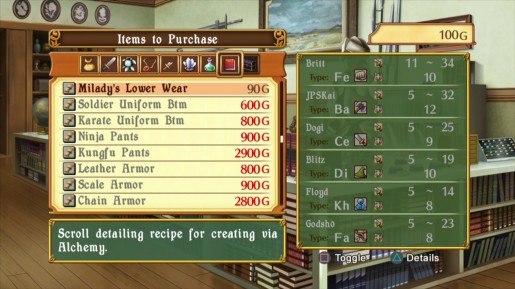 Alchemy, however, seems to be more of a hassle than it’s worth. Crafting requires returning to the academy (unless you have a gnome alchemist in the party), the proper piece of junk that corresponds to whatever item you’re crafting, and various synthesis items. Having the proper alchemy recipe helps to see what is necessary in game, but Gaijinworks has provided a compilation of most of the alchemy recipes here. I often found myself swimming in junk that was often too low level to be of any use of my party and I was better off just gathering up the dosh to afford new gear from the next town I visited.
Alchemy, however, seems to be more of a hassle than it’s worth. Crafting requires returning to the academy (unless you have a gnome alchemist in the party), the proper piece of junk that corresponds to whatever item you’re crafting, and various synthesis items. Having the proper alchemy recipe helps to see what is necessary in game, but Gaijinworks has provided a compilation of most of the alchemy recipes here. I often found myself swimming in junk that was often too low level to be of any use of my party and I was better off just gathering up the dosh to afford new gear from the next town I visited.
Getting around the dungeons can sometimes be a hassle. Without the proper map in your inventory, you’ll be going around blindly without an auto-map and even then, trying to get around all of the traps without Float can also be a hindrance. One of the bigger annoyances to getting around are some of the map tools that feel lacking. Treasure chests are not tracked on the map, so missing one will require navigating around blindly until you find it. Entrances and exits are marked on the map but are only labeled if they lead to another zone or town, making navigating around inside the dungeon sometimes a pain especially for the maps with five plus exits on a given map.
To alleviate the navigation woes, Gaijinworks coded in a very novel remote play feature for Class of Heroes 2G. With the usage of a PSP/Vita, you can enable second screen support in a way not previously seen in any other game before. Through remote play (not requiring owning a PSP copy of Class of Heroes 2), players can use their handheld not only as a controller for the game but also a handy menu for combat. On a given character’s turn, it will bring up a menu of their stats and other vitals as well as a basic menu giving the player a total of their statistics and kill count, handy for those that want to know how close they are to that 50,000 kill trophy (it’s quite a grind, as I finished the game with just under 10k kills under my belt). This dual screen support is something that I would love to see other companies utilize in future RPG releases on PlayStation.
Class of Heroes 2G in a nutshell is a classic send back, a compromise between the earlier gridders of yore such as Wizardry with the modern style of an Etrian Odyssey title. While easier than its contemporaries, instead that should mark as an entry point for those interested in trying out the genre but don’t wish to get bogged down with complexities and intricacies of more recent titles. Class of Heroes 2G is a welcome addition to any RPG fan’s library and in the words of Victor Ireland, is “nothing without you!”

